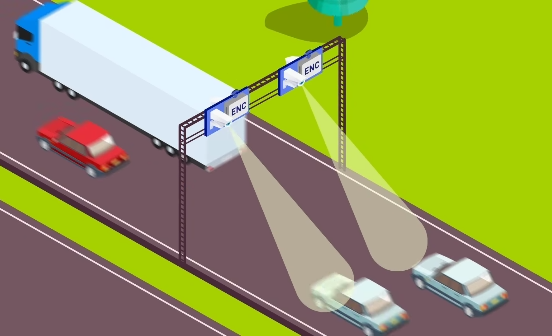
The new toll system will offer users the option of paying as before via the ENC device or via automatic number plate recognition. It is expected to be operational after the summer of 2026, the Ministry of the Sea, Transport and Infrastructure announced on Tuesday.
A contract worth 80 million euros was signed on Tuesday for the development of the new system, which is to be financed with funds from the National Reconstruction and Resilience Plan.
The contract was signed by Boris Huzjan, Chairman of the Board of Directors of Croatian Motorways (HAC), Minister Oleg Butkovic and representatives of the consortium, consisting of the Slovakian company Sky Toll and the Czech company TollNet.
The new toll system will cover the entire motorway network in Croatia, with the largest part being managed by HAC, but also include the concessionaires Bina-Istra and the Zagreb-Macelj motorway.
The new system will allow the free movement of vehicles on multiple lanes
Hrvoje Dorcic from HAC said that the new system will enable an immeasurably faster flow of vehicles.
It is expected that the new system will enable the free flow of vehicles on multiple lanes. Control will be taken over by 208 toll booths at motorway junctions.
"These portals will be equipped with cameras and antennas that will enable toll collection and payment control," said Dorcic.
There are also plans to procure and equip 74 mobile units, which will also be used for toll collection and are equipped with cameras and lasers. In addition, 140 lanes are planned for fast vehicle registration for users who are not registered via one of the possible methods. Regardless of which payment method users choose, they will be able to drive freely on the motorways without having to stop.
ENC mandatory for heavy vehicles
What is new is that the ENC device is mandatory for heavy vehicles of the third and fourth class and must be permanently attached to the windscreen, while users of light vehicles can choose one of the two toll options.
Matej Okali, CEO of SkyToll, said his company has experience in developing such systems and has strong references in the markets. He is confident that the project can be completed within the planned timeframe.
Huzjan said that the new tolling system should be implemented within two years. The project documentation should be finalised in four to five months and work will start on site at the same time.
Farewell to the toll booths
With the introduction of the new system, the toll booths will also be dismantled. Some of the employees currently working at the toll booths will be retrained for new positions and some, according to Huzjan, will naturally retire.
The system tests will last four months, during which the new and the current system will be in operation simultaneously.
Minister Butkovic said that no increase in toll prices is planned and that the toll will not be introduced on motorway sections where it is not currently charged. He also said that the Parliament will pass a law on toll collection.
Kakvo je tvoje mišljenje o ovome?
Pridruži se raspravi ili pročitaj komentare



 Srbija
Srbija
 Bosna i Hercegovina
Bosna i Hercegovina
 Slovenija
Slovenija







